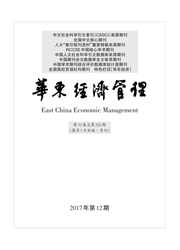

 中文摘要:
中文摘要:
近年来,学者和政策制定者逐渐将贫困的研究视角从单一的收入贫困扩展到多维贫困。文章基于CFPS的2010年基线调查数据,采取Alkire和Foster提出的双界限方法,根据《中国农村扶贫开发纲要(2011-2020)》提出的目标任务选取贫困维度,对我国农村的多维贫困进行了测度,并对测度结果进行了稳健性分析。测度结果表明,我国农村多维贫困状况比收入贫困状况恶劣。维度分解结果表明,社会保障和生活质量等维度的剥夺情况比较严重。地区分解结果显示,西部地区被剥夺状况高于中、西部地区。稳健性分析结果显示,测度结果对权重的选取是稳健的。因此,我国在此10年中,应从多维视角识别农村贫困,有针对性地提高扶贫政策的有效性。
 英文摘要:
英文摘要:
In recent years,more and more researchers and policy-makers have been focusing on the multidimensional poverty rather than one-dimensional income poverty. Based on the dataset of CFPS in 2010, the paper applies the dual cut-offs ap-proach proposed by Alkire and Foster, chooses the poverty dimensions in accordance with the“Outline for Development-ori-ented Poverty Reduction in China’s Rural Areas (2011-2020)”and measures the multidimensional poverty in rural China. Moreover,the paper makes the robustness test of the measurement. The result shows that the multidimensional poverty is much worse than the income poverty in rural China. The decomposition result of dimensions reveals that the dimensions of social secu-rity and living standard are deprived more, while the decomposition result of regions indicates that the western areas are de-prived more than the central and eastern areas. The robustness test demonstrates that the selection of weights in this paper is ro-bust. Therefore, it is important for China to identify rural poverty from the multidimensional perspectives in order to improve the effectiveness of the poverty-alleviating policies in this decade.
 同期刊论文项目
同期刊论文项目
 同项目期刊论文
同项目期刊论文
 期刊信息
期刊信息
